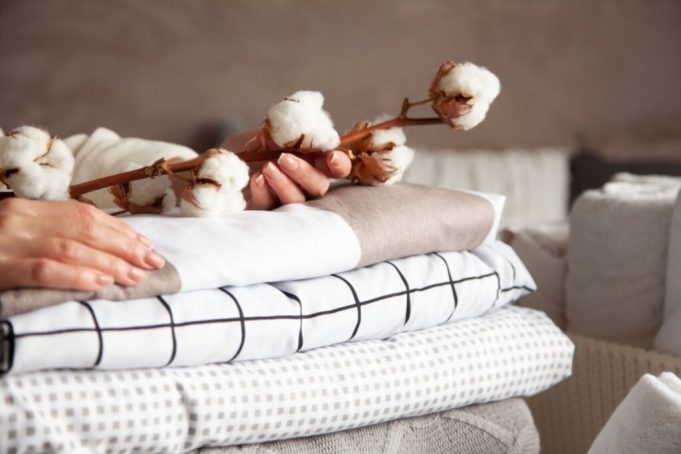Last Updated on March 16, 2024 by Ali Hamza
With every organic purchase, you are making your contribution to strengthening the atmosphere around us. India was known for using organic practices in the production of fabrics just Like Mahatma Gandhi used Charkha for producing threads for the manufacturing of fabric which was totally organic. But with industrialization and advent of technologies and the need for mass production made the textile industry go for more synthetic fabrics as they were much cheaper and more profitable. But people are now moving towards making better and eco-friendly choices when it comes to buying fabrics and the conscious choice is making the fashion world go through a sustainable revolution.
An organic fabric means a fabric that is produced by wasting minimum natural resources and the production is done by using all the eco-friendly techniques and there is no trace of using any type of chemical or fertilizer. India’s organic apparel industry has been growing substantially since several key factors contributed to the growth, according to Shikha Kumar, director and co-founder of Nino Bambino. As a result of geographical conditions, soil and climate factors, market trends, etc., the organic apparel industry has risen to prominence and now enjoys benefits that are strengthening the industry. Some of the eco-friendly fabrics that are becoming the hot favourite of every designer, celebrity and even common people are:
- Organic Cotton: One of the most loved fabrics which have gained immense popularity in India and globally. There was an increase of 31% in the production and consumption of organic cotton clothes in India. It has been predicted that a substantial increase of 10% will take place in the upcoming year. Organic Cotton is suitable for every age group as it is soft, chemical-free, skin-friendly, sturdy and breathable. Softening and soothing properties are developed with each wash. All the big brands making maternity clothes or baby clothes are using organic cotton for manufacturing garments.
- Bamboo Fabric: Next in line, which is gaining momentum in the Indian fashion industry is bamboo fabric. Even in earlier times, fabrics were made using bamboo but in the recent future, the process of making fabrics using bamboo wood has been perfected. The bamboo fibre of top quality is made using a natural enzyme on crushed bamboo wood fibres and then these fibres are washed and spun into a yarn. The fabric can be used for making intimate garments, sheets or hand towels.
- Organic jute: One of the game-changing fabrics in the Indian fashion industry is organic jute. For more than a decade, Indian people are using jute bags as an alternative to using plastic bags. The fabric is strong and breathable and is a great alternative to using plastic bags. These days the demand for jute fibre has increased because of its reduced carbon print, lustre and strength. India is one of the major producers of organic jute in the world. There are various fabric stores across the country which are selling this hot favourite fabric.
- Kala Cotton: It is a type of organic cotton grown in the kutch area of Bhuj District. The quality, softness and comfort, of Kala cotton, sustain for a longer period of time. This Indian fabric gained fame after the Khamir organization took an initiative for the artisans making Kala cotton. It does not need too much water for its cultivation and the chemical-free fabric is now a sustainable alternative to mass-produced inorganic fabrics.
- Organic-Linen: A flax plant is used to grow organic linen. The requirement for irrigation is very low and so is the case with fertilizers. Linen Pants or shirts are hot favourites among men. These days women are also supporting linen outfits like a pantsuit or crop tops or high-waisted pants. You can also flaunt a chic linen scarf and amp up your outfits.
These are a few fabrics that you can buy at any of the Indian Fabric stores which priced in a medium range. Each one of us should buy these fabrics and contribute in ways that can lead to better surroundings for the upcoming generations in terms of climatic changes. These eco-friendly fabrics are better and are trying to change the future of the fashion industry.

















